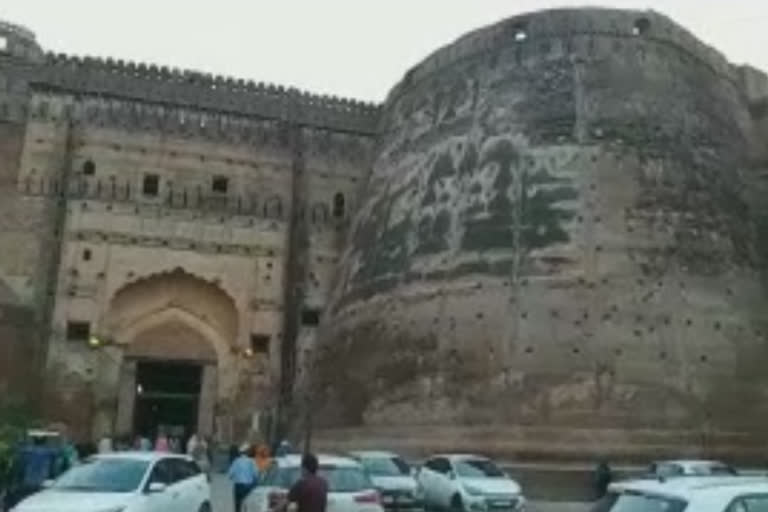Bathinda (Punjab): The historical Qila Mubarak of Bathinda, residing in the famous city of Punjab’s Malwa region holds a special place in India for its unique and elegant architecture. This Fort's architectural marvels tells the tales of valour, all in their own way, bear testimony to the glory that Punjab's region Bathinda (Malwa)is. A wonderful view of Bathinda from its top mesmerizes everyone that further increases the aesthetic aspect.
The huge door and big walls tell the story of the fort’s grandeur. According to historians, the fort of Bathinda was built by King Dab. It was earlier known as Vikramgarh fort. The fort was later renamed as Jaipalgarh by King Jaipal. It is said that King Dab was the descendant of Vinaypal. There was a time when even Mohammad Ghaznavi, Mohammad Gauri and Prithviraj Chauhan also won over the fort. As a result, this fort is also known as Tabaar-e-Hind.
Darshan Singh Sohi, Member, Malwa Heritage Foundation says, '' The fort was very vibrant during the rule of King Vinaypal. The city of Bathinda was happily inhabited during the rule of Vinaypal. It had fortresses and armies as well. When we read the history, we find that when Mahmud Ghaznavi attacked the city, the first attack was launched on Anangpal. It is said that Anangpal lost to Mahmud Ghaznavi and committed self-immolation by jumping on the funeral pyre inside the fort. This fort has a long history. It's every nook and corner has a story to tell. This fort was also ruled by the Bhatti kings, who renamed the city as Bathinda.''
''In the Middle Age, Bhatti Rao Rajput rebuilt Quila Mubarak and renamed the fort as Bhatti Winda. Thus, the city was first renamed as Bhatinda and then Bathinda. When Guru Gobind Singh Ji came to the fort in 1707, then the fort was named as Fort Gobindgarh. Not only this, when Razia Sultana, the first female ruler of the Delhi came to Bathinda in 1239 to crush the rebellion by Governor Altunia, she was imprisoned by Altunia at Bathinda Fort. She was imprisoned in this fort’s Rani Ki Mahal area for about two months,'' said Darshan Singh Sohi, Member, Malwa Heritage Foundation
